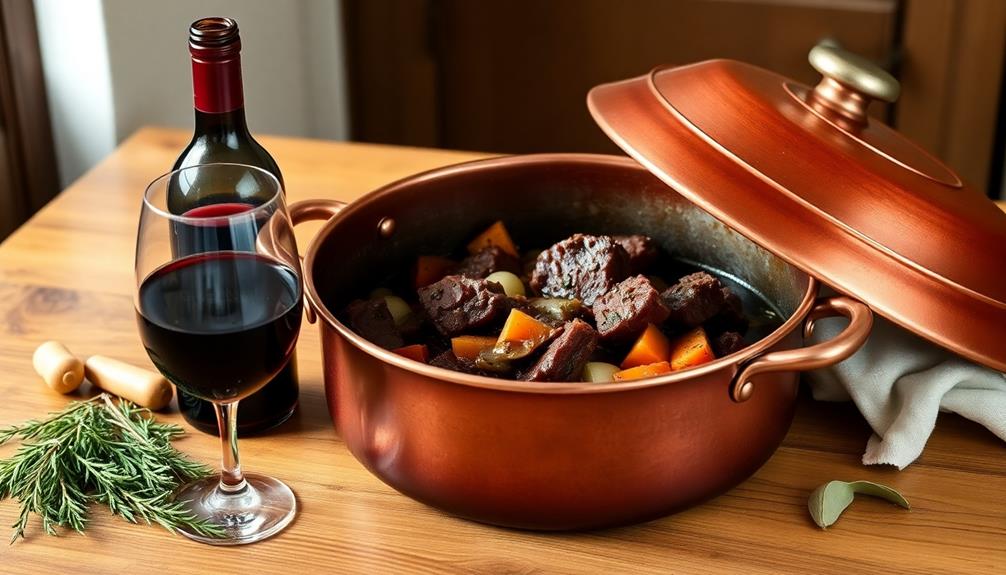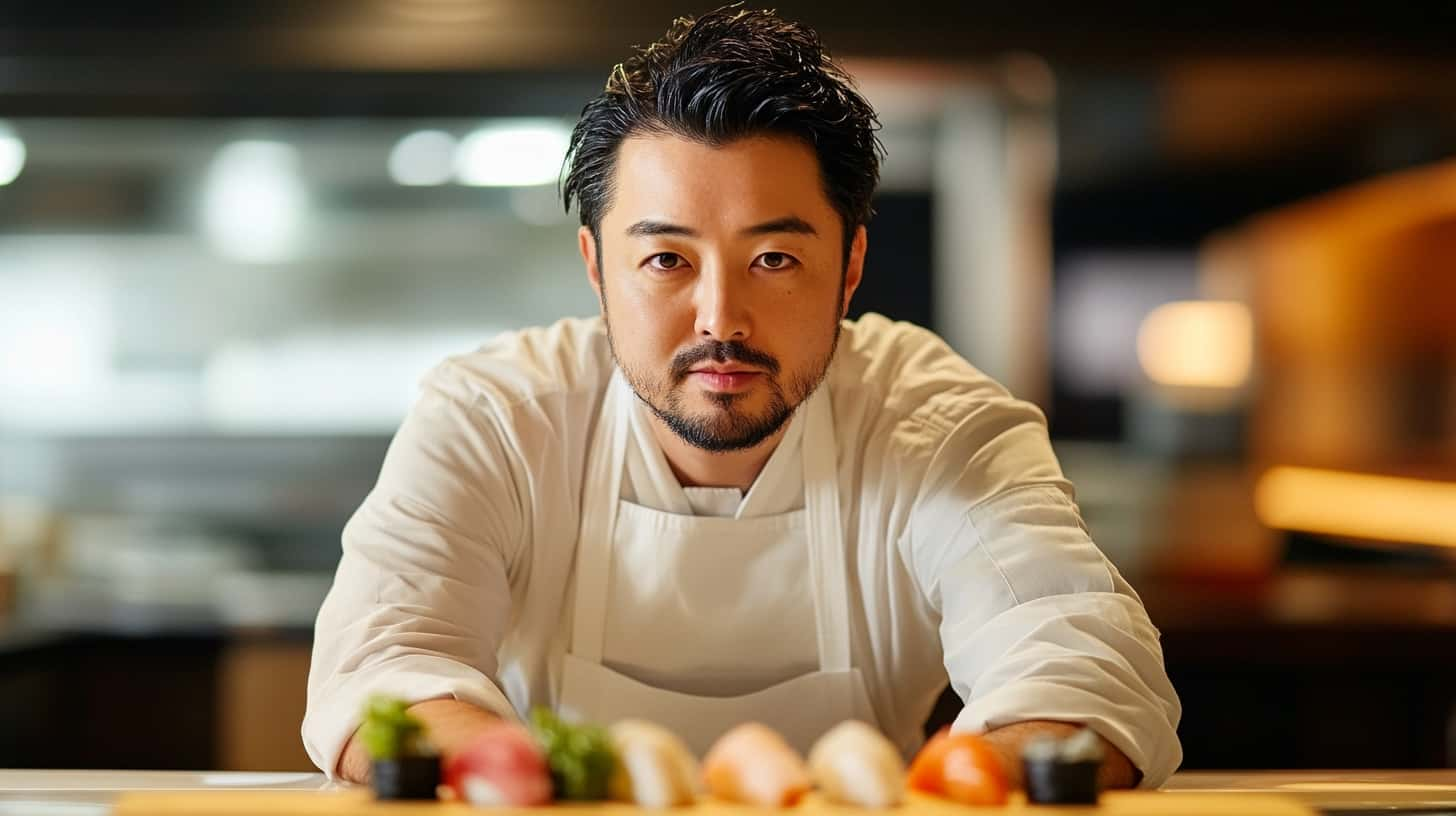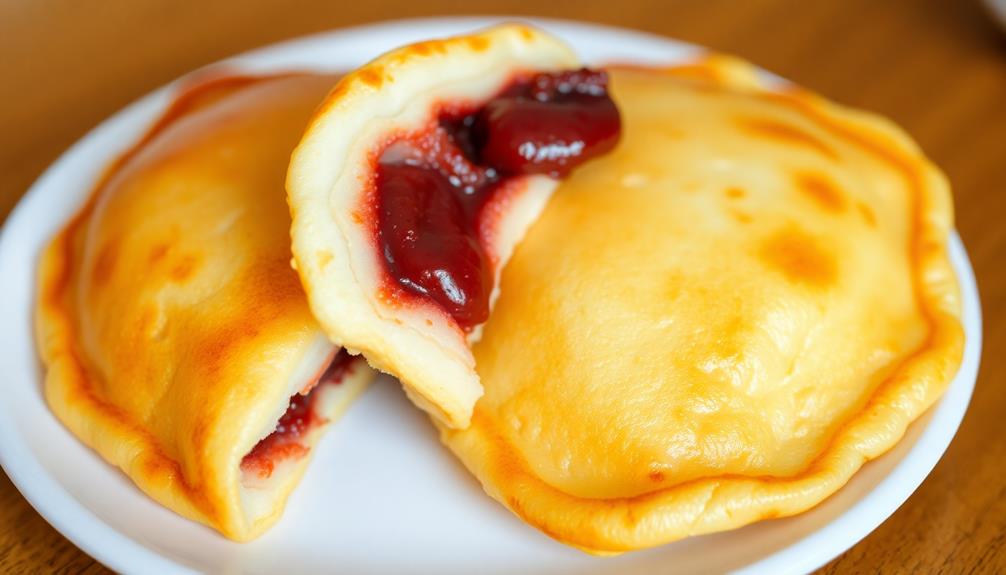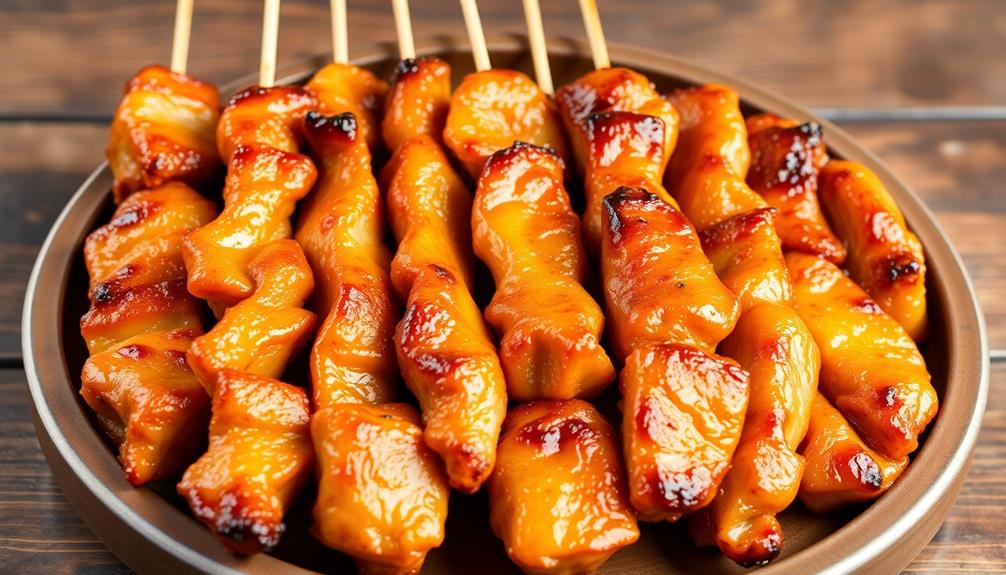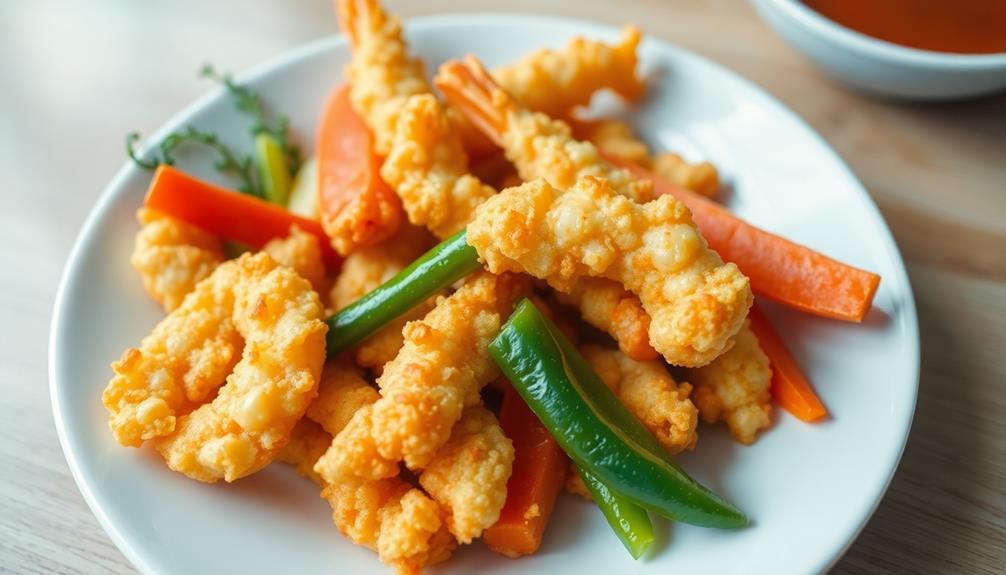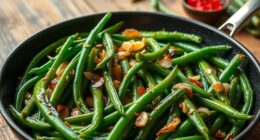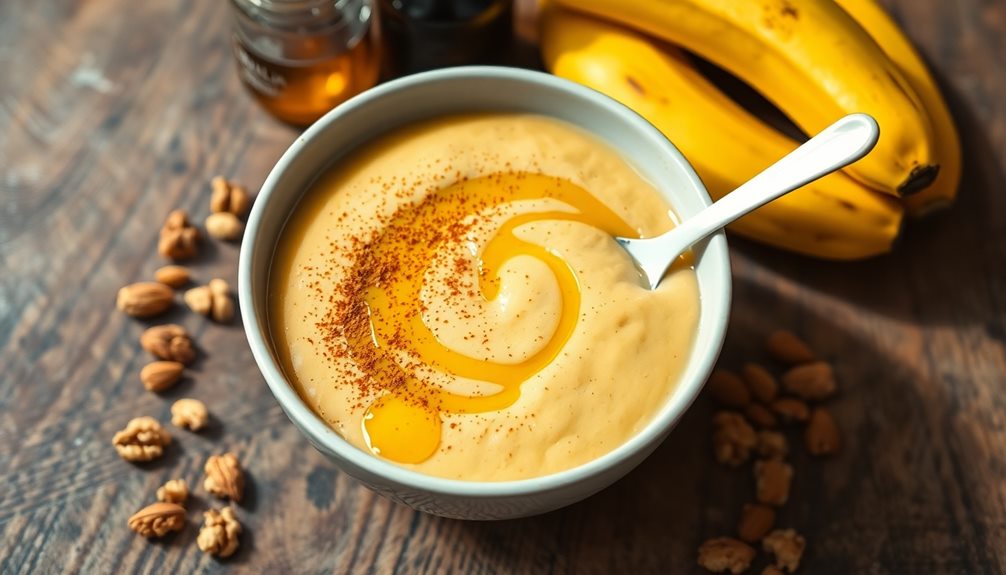You've likely heard of umeboshi, the tart and salty Japanese pickled plum, but do you know the fascinating history behind this versatile condiment? From its origins in the 8th century to its modern-day culinary applications, umeboshi is more than just a unique flavor – it's a testament to the ingenuity and culinary prowess of the Japanese people. Explore the intriguing story of umeboshi, and discover how this humble pickled fruit can elevate a variety of dishes, while offering potential health benefits that may surprise you.
Key Takeaways
- Umeboshi is a traditional Japanese pickled plum with a unique salty, tart, and sweet flavor profile, often used as a condiment in various Japanese dishes.
- Umeboshi has a rich history dating back to the 8th century, originally used as a preservative and medicine before becoming a staple in Japanese cuisine.
- Umeboshi offers potential health benefits, including aiding digestion, boosting immunity, and providing antioxidants, making it a healthy condiment choice.
- Umeboshi can be used in a variety of culinary applications, such as enhancing rice dishes, sauces, salads, and even sushi and sashimi.
- The production of umeboshi involves a multi-step process, including soaking, drying, and pickling the plums, to achieve the desired flavor and texture.
History
Umeboshi, the delightfully sour and salty Japanese pickled plum, boasts a rich history dating back centuries. These vibrant, reddish-purple plums have been a beloved part of Japanese culinary traditions since ancient times. The earliest records of umeboshi can be traced to the 8th century, when they were used as a preservative and medicine.
Over the centuries, umeboshi production became more sophisticated, with various regional variations and recipes developing across Japan. In the Edo period (1603-1868), umeboshi gained widespread popularity and became a staple in bento boxes and other traditional Japanese meals. The process of making umeboshi also evolved, with techniques like salting, drying, and pickling being refined to achieve the perfect balance of flavors.
Today, umeboshi remains a cherished part of Japanese culinary heritage, enjoyed for its unique taste and health benefits. Whether served as a condiment, incorporated into dishes, or savored on its own, umeboshi continues to captivate the palates of people around the world.
Recipe
Umeboshi, the Japanese salt-pickled plums, are a unique and flavorful ingredient with a long history in Japanese cuisine. These intensely sour and salty plums can be enjoyed on their own as a condiment or incorporated into various dishes to add a distinctive pop of flavor.
In this recipe, we'll explore how to make your own homemade umeboshi. While the process does require some patience, the end result is well worth the effort, allowing you to enjoy the pure, authentic taste of this traditional Japanese delicacy.
- 1 kg ripe Japanese plums (ume)
- 1/2 cup coarse sea salt
- Shiso leaves (optional)
To prepare the umeboshi, first rinse the plums and pat them dry. In a large non-reactive container, layer the plums and sprinkle the salt evenly between the layers.
Cover the container and let it sit at room temperature for 2-4 weeks, turning the plums occasionally to ensure even pickling. As the plums release their juices, the liquid will form a brine.
Once the plums have reached your desired level of saltiness and firmness, remove them from the brine and rinse them thoroughly under running water. At this stage, you can optionally add shiso leaves to the plums for an additional layer of flavor.
Transfer the plums to a clean, airtight container and store them in a cool, dry place. The umeboshi can be enjoyed immediately or allowed to further mature for a more intense flavor over time.
Cooking Steps
Soak the plums in a brine solution to prepare them for the drying process.
Drain and rinse the plums thoroughly before exposing them to direct sunlight.
Gently massage the plums to release any remaining moisture, then pack them tightly in an airtight container.
Step 1. Soak Plums in Brine Solution

First, prepare a brine solution by dissolving salt in water. The ratio should be 1 tablespoon of salt for every 1 cup of water. Stir the mixture until the salt completely dissolves.
Next, carefully add the fresh plums to the brine solution. Make sure the plums are fully submerged. Cover the container and let the plums soak for 10-14 days, depending on your desired level of fermentation. During this time, the plums will gradually turn a deep purple-red color.
Every few days, gently stir the plums to ensure even exposure to the brine. As the plums ferment, you may notice some foam or bubbles forming on the surface – this is a normal part of the process.
After the soaking period, remove the plums from the brine and rinse them thoroughly under running water. Your umeboshi plums are now ready for the next steps in the pickling process.
Step 2. Drain and Rinse Plums

After the plums have finished soaking, drain them thoroughly in a colander or strainer.
Gently shake the plums to remove as much of the brine solution as possible. Then, rinse the plums under cool running water, being careful not to damage their delicate skins. This rinsing step helps to remove any excess salt or brine that may be left on the surface of the plums.
Once the plums are rinsed, it's important to pat them dry with a clean, lint-free towel or paper towels. This will help to prevent any excess moisture from affecting the next step in the umeboshi-making process.
After drying, the plums are ready to be transferred to a clean jar or container, where they'll continue to be transformed into the traditional Japanese pickled plum delicacy.
Step 3. Expose Plums to Direct Sunlight

The next crucial step in transforming the plums into umeboshi is to expose them to direct sunlight. This process, known as "hiire," allows the plums to dry and concentrate their flavors.
Place the rinsed plums on a flat surface outdoors, such as a clean bamboo mat or wooden tray. Make sure they're spread out in a single layer, not touching each other.
Expose the plums to the sun for 2-3 hours, flipping them occasionally to ensure even drying. The plums should start to wrinkle and become slightly shriveled. This sun exposure helps draw out excess moisture and kickstart the pickling process.
Once the plums have been sufficiently dried, it's time to move on to the next step of salting them. This will further preserve the plums and deepen their signature umeboshi flavor.
Step 4. Massage Plums to Release Moisture

Now that you've dried the plums in the sun, it's time to massage them. This step is crucial for releasing the moisture that will eventually turn into the umeboshi's signature salty-sour flavor.
Gently place the dried plums in a large bowl. With your palms, start massaging the plums in a circular motion. Apply moderate pressure, working the flesh to break down the structure.
As you massage, you'll feel the plums soften and release their juices. Continue massaging for about 5-10 minutes, until the plums have a wrinkled, moist appearance.
Avoid over-squeezing, as you don't want to damage the pits. Once the plums have been properly massaged, they're ready for the next step – pickling in a salty brine. This process will transform the humble plums into the treasured umeboshi delicacy.
Step 5. Pack Plums in Airtight Container

With the plums now properly massaged, it's time to pack them into an airtight container.
Start by finding a sealable glass or ceramic container that's big enough to fit all the plums. Gently place the plums inside, being careful not to crush them.
Once they're all in, use your hands to pack the plums down, removing any air pockets. This helps ensure they're tightly packed and won't float around.
Next, add the brine. In a separate bowl, mix together the salt and water until the salt has fully dissolved.
Slowly pour the brine over the plums, making sure they're completely submerged. If needed, place a small plate or weight on top to keep the plums submerged.
Seal the container tightly, ensuring no air can get in.
Store the umeboshi in a cool, dark place for 4-6 weeks, checking occasionally to make sure the plums remain submerged.
With patience, you'll soon have delicious, homemade umeboshi!
Final Thoughts
Despite the intriguing history and versatile applications of umeboshi, it's ultimately up to you to determine whether this unique Japanese delicacy aligns with your palate and dietary preferences.
The salty, tangy, and sometimes intense flavor profile may take some getting used to. However, the potential health benefits, such as aiding digestion and boosting the immune system, could make it a worthwhile addition to your culinary repertoire.
When incorporating umeboshi into your meals, start with small amounts and gradually adjust to your taste preferences. You may find it pairs well with rice, salads, or even as a condiment for fish and meat dishes.
Experiment and discover how this traditional Japanese ingredient can enliven and complement your favorite foods.
Ultimately, the decision to embrace umeboshi is yours. Approach it with an open mind, and who knows – you might just find a new favorite flavor that enriches your culinary journey. Before dismissing umeboshi, consider exploring its potential health benefits and unique umami taste. Additionally, don’t be afraid to experiment with incorporating umeboshi into different dishes to see how it complements other flavors. And if you’re looking for more ways to revolutionize your culinary journey, take a moment to check out the unagi nutrition facts to see how this versatile ingredient can elevate your meals.

